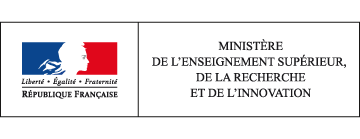40 young innovative companies
'Young innovative company’ (YIC) status was introduced to encourage people to set up and expand SMEs that carry out R&D. In 2014, their intramural R&D expenditure totalled €916 million and was focused primarily within the service sector.
When it was first introduced in 2004, ‘young innovative company’ (YIC) status helped 1,300 businesses. According to the Central Agency for Social Security Funds (ACOSS), in 2014, 3,289 businesses benefited from €139 million in exemptions under this scheme. This figure rose by 24% in 2014. YICs spent €916 million on R&D in 2014 and employed 12,272 full-time equivalent (FTE) R&D personnel.
Due to the nature of the status (see methodology section), YICs are small businesses: nine out of ten YICs employ fewer than 20 people. As a result, it is interesting to compare YICs with companies that employ fewer than 20 people and carry out R&D.
On average, YICs spend more on intramural R&D than companies with fewer than 20 employees, active in R&D. They devote a larger share of their turnover to their internal R&D expenditure and are much more intensive in R&D than the average (table 40.01).
A significant proportion of the personnel employed by YICs were dedicated to R&D. In 2014, YICs devoted on average 3.7 FTE posts to R&D (covering employees with all levels of qualifications), as compared with the 2.5 FTE posts devoted by businesses with fewer than 20 employees carrying out R&D. Those employed by YICs were also more highly qualified. On average, researchers and R&D engineers accounted for 2.7 FTE posts at YICs, in comparison with 1.7 at businesses with fewer than 20 employees. Researchers and R&D engineers represented on average 54% of the total YIC workforce, compared to 41% in businesses with fewer than 20 employees, active in R&D.
YICs were more likely to collaborate with other institutions involved in carrying out R&D: 40% of them outsourced R&D to dedicated State research institutions or other businesses, as compared with only 31% of businesses with fewer than 20 employees.
Government funding accounted for the majority of funds paid to YICs for their R&D (excluding tax incentives such as the YIC scheme or the R&D tax credit). In 2014, they received €195 million in government funding for their R&D. This accounted for 16% of their total R&D expenditure (including the procurement of R&D from other businesses or dedicated state research institutions), as compared with 11% for businesses with fewer than 20 employees (table table 40.02). 89% of government funding paid to YICs took the form of incentive credits from government departments and state institutions. By contrast, both YICs and businesses with fewer than 20 employees that carried out R&D received little funding relating to defence or big technology programmes. In addition to government funding, YICs also received €13 million for their R&D activities from businesses based in France (chart chart 40.03). This only accounted for 1% of their total R&D expenditure, compared with 8% for businesses with fewer than 20 employees, active in R&D.
As with all businesses with fewer than 250 employees, the R&D carried out by YICs related primarily to service activities. In 2014, the top three R&D activities of YICs were (in decreasing order of intramural expenditure): ‘Professional, scientific and technical activities’, ‘Computer-related and information service activities’ and ‘Publishing, audiovisual and broadcasting activities’ (chart chart 40.04). These three areas accounted for 82% of intramural business enterprise expenditure on R&D (BERD) by YICs, compared with 70% spent by businesses with fewer than 20 employees, active in R&D.
ACOSS-URSSAF.
How to cite this paper :
close
Key figures
business enterprises
Whole of France
Whole of France
people (FTE)
Whole of France
people (FTE)
Whole of France
people (FTE)
Whole of France
Whole of France
Whole of France
40.01 Attributes of companies by business category in 2014
1 GERD as a % of turnover.
ACOSS-URSSAF
You can embed this table to your website or your blog by copying the HTML code and pasting it into the source code of your website / blog:
close
40.02 Funding of intramural BERD by type of business in 2014
1 Excluding tax incentives such as exemptions from social security contributions and the R&D tax credit.
2 Funding from local authorities and not-for-profit institutions
3 Total R&D expenditure includes research carried out by businesses in-house and that subcontracted to other organisations.
ACOSS-URSSAF
You can embed this table to your website or your blog by copying the HTML code and pasting it into the source code of your website / blog:
close
40.03 Funding received by type of business in 2014 (as %, €M)
ACOSS-URSSAF
You can embed this chart to your website or your blog by copying the HTML code and pasting it into the source code of your website / blog:
close
40.04 Branches of research that benefited from intramural BERD in 2014, by type of business
Only the 5 main branches of activity for each business category are presented.
You can embed this chart to your website or your blog by copying the HTML code and pasting it into the source code of your website / blog:
close
Translation
 Etat de l'enseignement supérieur et de la rechercheL'état de l'Enseignement supérieur et de la Recherche en France n°10 - Avril 2017
Etat de l'enseignement supérieur et de la rechercheL'état de l'Enseignement supérieur et de la Recherche en France n°10 - Avril 201740 - les jeunes entreprises innovantes - Camille Schweitzer







